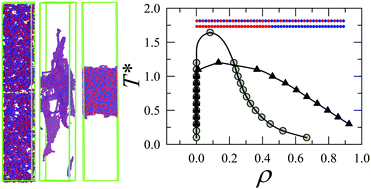Coarse-grained residue-based models of disordered protein condensates: utility and limitations of simple charge pattern parameters
Abstract
Biomolecular condensates undergirded by phase separations of proteins and nucleic acids serve crucial biological functions. To gain physical insights into their genetic basis, we study how liquid–liquid phase separation (LLPS) of intrinsically disordered proteins (IDPs) depends on their sequence charge patterns using a continuum Langevin chain model wherein each amino acid residue is represented by a single bead. Charge patterns are characterized by the “blockiness” measure κ and the “sequence charge decoration” (SCD) parameter. Consistent with random phase approximation (RPA) theory and lattice simulations, LLPS propensity as characterized by critical temperature Tcr* increases with increasingly negative SCD for a set of sequences showing a positive correlation between κ and –SCD. Relative to RPA, the simulated sequence-dependent variation in Tcr* is often—though not always—smaller, whereas the simulated critical volume fractions are higher. However, for a set of sequences exhibiting an anti-correlation between κ and –SCD, the simulated Tcr*'s are quite insensitive to either parameter. Additionally, we find that blocky sequences that allow for strong electrostatic repulsion can lead to coexistence curves with upward concavity as stipulated by RPA, but the LLPS propensity of a strictly alternating charge sequence was likely overestimated by RPA and lattice models because interchain stabilization of this sequence requires spatial alignments that are difficult to achieve in real space. These results help delineate the utility and limitations of the charge pattern parameters and of RPA, pointing to further efforts necessary for rationalizing the newly observed subtleties.



 Please wait while we load your content...
Please wait while we load your content...